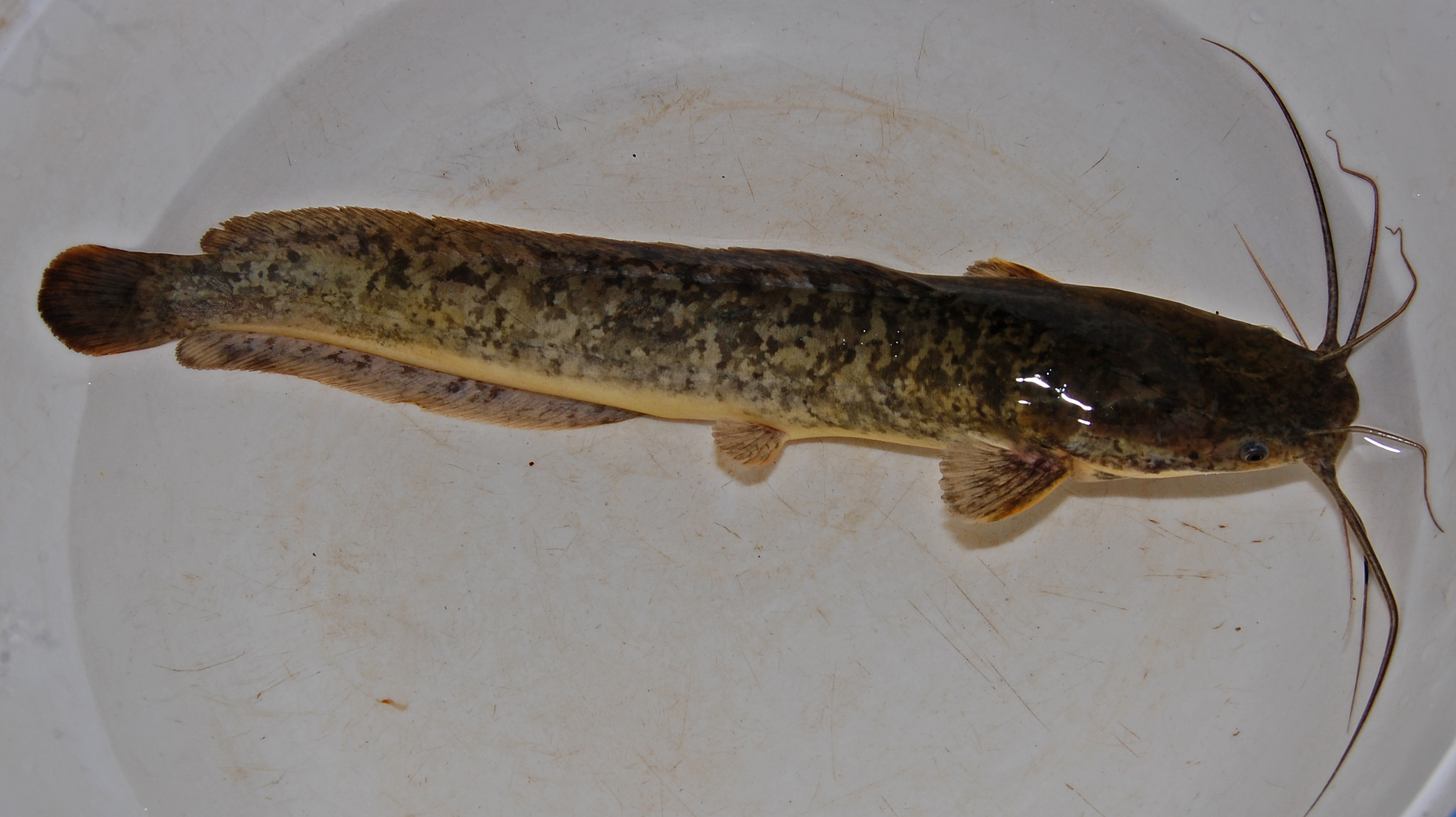The Clarias gariepinus, commonly known as the African sharptooth catfish, is a fascinating species belonging to the family Clariidae, which comprises air-breathing catfishes primarily found in African lakes and rivers. Its habitat spans across the vast expanse of Africa and extends into the Middle East, where it thrives in various freshwater environments.
From serene lakes to winding rivers and murky swamps, the Clarias gariepinus establishes its presence with remarkable adaptability. Notably, this resilient species demonstrates an impressive ability to inhabit diverse habitats, including human-made structures such as oxidation ponds and urban sewage systems. The versatility of its habitat preferences underscores its resilience and capacity to survive in both natural and man-altered environments, making it a ubiquitous presence across the African continent and beyond.
Clarias Gariepinus/African Sharptooth Catfish: Profile, Facts
Physical Characteristics of Clarias gariepinus
The African sharptooth catfish, scientifically classified as Clarias gariepinus, boasts a distinctive set of physical attributes that distinguish it within the realm of aquatic fauna. Sporting a sleek, elongated body, adorned with a mottled pattern of dark hues, this catfish navigates its aquatic domain with grace and efficiency. Its most notable feature, the sharply pointed teeth, serves as a testament to its predatory prowess, enabling it to secure sustenance in its varied habitats.
Furthermore, its ability to breathe atmospheric air, facilitated by specialized respiratory organs, affords it a unique advantage, allowing it to thrive in oxygen-deprived environments where other aquatic species might falter. The Clarias gariepinus, with its remarkable physique and adaptive mechanisms, stands as a testament to the marvels of evolutionary adaptation in the aquatic realm.
Ecological Role and Behavior of Clarias gariepinus
Beyond its physical attributes, the African sharptooth catfish, Clarias gariepinus, plays a pivotal role within the intricate tapestry of aquatic ecosystems it inhabits. As an apex predator, it exerts a significant influence on the dynamics of fish populations, regulating their numbers and contributing to the balance of aquatic communities. Its omnivorous diet, comprising both animal matter and plant material, underscores its position as a versatile consumer within the food web, adept at exploiting various food sources to sustain itself.
Additionally, its nocturnal tendencies and solitary nature lend an aura of mystery to its behavior, as it prowls the depths under the cover of darkness, hunting its prey with stealth and precision. By occupying a niche as both predator and scavenger, the Clarias gariepinus plays a multifaceted role in shaping the ecological landscapes of African waterways, embodying the intricate interplay between species within complex ecosystems.
Conservation Status and Human Interaction
The conservation status of Clarias gariepinus, the African sharptooth catfish, stands at a critical juncture, reflecting the complex interplay between human activities and ecological integrity. While its adaptability has enabled it to persist in diverse habitats, anthropogenic factors such as habitat degradation, pollution, and overexploitation pose significant threats to its long-term survival. Unregulated fishing practices, driven by commercial interests and subsistence needs, place undue pressure on wild populations, exacerbating the vulnerability of this species.
Other Recommended Articles
- Freshwater Needlefish – Description | Facts | Size | Care
- Keeltail Needlefish – Description | Facts | Dangerous
- Inshore Lizardfish – Facts | Diet | Fishing | Adaptation
- Skilletfish (Gobiesox strumosus) – Description | Facts
- Cuban Gar Fish – Description | Facts | Care | Size
- Tropical Gar Fish – Description | Care | Tank Mates
- Lepisosteus oculatus | Spotted Gar | Facts | Description
- Honey Gourami | Trichogaster chuna | Facts | Description
- Lepisosteus osseus | Longnose Gar | Description
- Brindled Madtom Catfish – Description | Facts | Food
- River Carpsucker – Description | Facts | Fishing
- Electric Catfish – Size | Care | Facts | Voltage
- Stream Catfish Description and Facts
- Madtom Catfish – Care | Range | Venom | Description
- Tadpole Madtom Catfish Range | Sting | Aquarium
- Florida Gar Fish – Size | Aquarium | Care | Lifespan
- Shortnose Gar Fish – Size | Diet | Record | Range | Facts
- Shark Catfish – Size | Food | Care | Tank Mates | Species
- Synodontis Catfish – Size | Food | Breeding | Care
- Pearl Gourami Fish – Size | Tank Mates | Description

